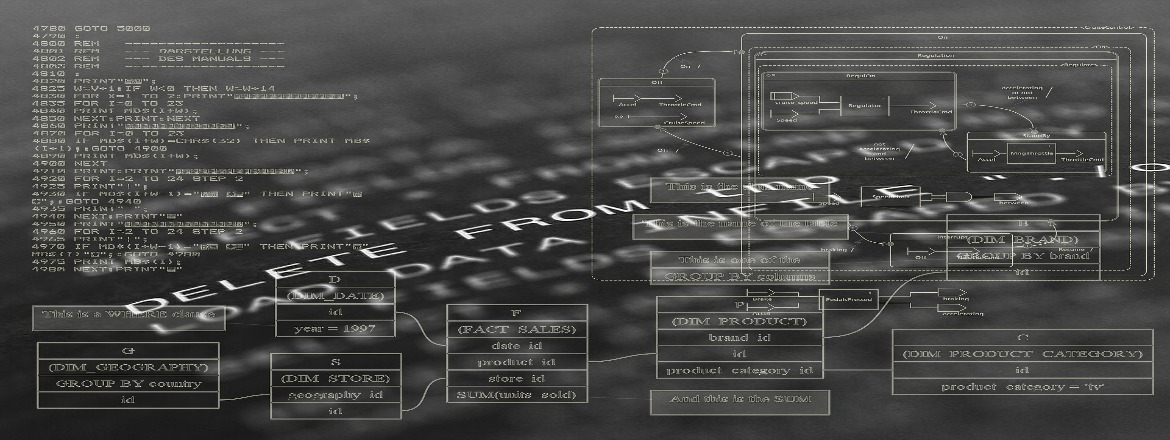How To Protect Algorithms That Enhance Businesses

Table of Contents
Good business managers are praised for their decision-making ability. However, extraordinary business managers redefine how decisions are made. What separates legendary leaders like Steve Jobs from the crowd is the ability to not only predict future trends but to create them. While to many this ability might seem like sorcery, much of this business acumen is owed more to science than intuition or magic. For instance, business tools like SWOT analyses are basic algorithms that businesses employ to achieve their goals. However, with digitalization, a new form of business tool has emerged in the form of machine learning, artificial intelligence, and the algorithms they employ.
The rise of digital assets like algorithms has created a legal dilemma. While intellectual property rights cover the protection of ideas and concepts, algorithms however are harder to define and protect. The question then is, how can algorithms that enhance business be protected especially if they are not subject to intellectual property protection?
Algorithms are valuable business assets that warrant protection.
What is an Algorithm
An algorithm can be defined as a set of rules used to solve a problem or complete a specific task.
Digital and computer devices all use algorithms to function and perform tasks. In addition, algorithms are employed to perform complex tasks like high-frequency trading, market analysis, and are the basis for AI, machine learning, and quantum computing.
The idea of automated decision-making dates as far back as 700 B.C. in ancient Greek folktales. Homer coined the term automaton in Iliad, where the goddess Hera rode a fiery golden chariot through the automatic gates of heaven. By the seventeenth century, philosophers had devised a set of logic rules to automatically make a default judgment to settle disputes. The next century birthed automatic industrial machines which became the precursor to modern-day robots. The end of the twentieth century saw the emergence of the algorithmic-information era, where algorithms are now used in precision cases like medical diagnosis and robotic surgery.
Algorithm eminence is best demonstrated when making decisions under uncertainty. They use historical observations and SWOT analysis to choose an action. Instead of re-inventing the wheel, managers can stand on the shoulders of those that came before them and use historical data for each scenario. Going through each scenario would be time-consuming as it requires accounting for all present and future changes. Picture Doctor Strange looking into the future 14,000,605 times to account for every possible showdown between the Avengers and Thanos in the Infinity War movie.
Fortunately, such a daunting task can be easily solved using algorithms. In fact, AI-driven algorithms predict better outcomes as they receive more data. At the same time, machine learning-based algorithms learn or teach themselves with each repetition of a scenario. Meaning, the longer they are in use, the more accurate they become. Instead of diminishing over time, most algorithms appreciate over time and this is why protecting these business assets is so crucial.
Why is Intellectual Protection of Algorithms Important
Algorithms are valuable business assets that warrant protection. In addition, to create an algorithm, it is important, to begin with, the end in mind and work backward to achieve the expected end result. As such, most algorithms require several iterations to achieve the desired effect.
At the same time, the use of supercomputers and bots is becoming more mainstream with each passing day. This rise in adoption is enhancing the need for businesses to safeguard their competitive advantage. However, this would be impossible if the effort is not rewarded or protected. This is the role intellectual property protection plays, without it there would be no incentive to invest in innovation.
Intellectual property protection is what makes the creative process worthwhile for creators. For many inventors, success doesn’t come overnight nor is it achieved effortlessly. Years of practice, trial, and error are invested in the creative process before even considering the financial implications.
What makes this investment in time, effort, and money worthwhile is the idea of reaping some form of financial reward in return for their efforts. In this way, intellectual property protection serves as a form of security for creators and inventors.


Protecting Algorithms that Enhance Business
As a result of expanding digital trade and e-commerce, more areas of the economy are being digitized. As such, algorithms have become the backbone of breakthroughs in artificial intelligence and computer science. New opportunities bring new challenges. New advancements make it difficult for IP law to keep abreast. This results in blanket IP laws that keep revealing built-in loopholes. The Bernstein and Junger court cases even suggest that algorithms are a form of speech.
Copyrights held up well when actual lines of code were the basis of algorithms. Nowadays algorithms can be built by clicking icons or using drag and drop features. Individuality has been taken out of the writing of the source code.
Patent law proves troublesome since patents reward the first winner to cross the finish line. Nowadays algorithms can be written without any human involvement, using self-learning artificial intelligence. If no one is directly involved in creating the algorithm then ownership becomes debatable and it is not clear who should be credited as the creator. To complicate things further, patent law protecting software often stipulates the disclosure of algorithms contained therein. While failing to adequately protect against copycats directly copying the source code or recreating it.
Conclusion
Presently, algorithms do not neatly fit into any existing intellectual property category. As such, to adequately protect these vital business assets creators must employ a proactive approach that utilizes multiple available resources and categories. For instance, businesses using algorithms can issue non-disclosure agreements, and confidentiality letters stipulating that employees, partners, and subcontractors may not share any breakthroughs birthed during business hours, using business resources. Rather than filing a patent, the business should take the trade secret route.
Trade secrets are confidential business information from which the business derives its competitive advantages. A trade secret is something that takes time and resources to develop, is critical to the business, and cannot be reverse-engineered. Algorithms are generally hard to reverse engineer without their source code. The algorithmic trade secret is viable as demonstrated by Coca-Cola and its secret formula, Merchandise 7x.
If you would like to learn more about algorithm protection or intellectual property protection, please contact us at [email protected].
Frequently Asked Questions
What is an algorithm?
An algorithm is a set of rules used to solve a problem or complete a specific task, widely employed in digital and computer devices for tasks ranging from high-frequency trading to artificial intelligence.
How do algorithms contribute to business decision-making?
Algorithms, like SWOT analysis, form the basis for digital tools. They assist in making complex business decisions, utilizing historical data and predictive analysis.
Why are algorithms considered valuable business assets?
Algorithms are valuable due to their predictive and decision-making capabilities. They appreciate over time, providing a competitive advantage, and hence warrant protection.
Why is intellectual property protection important for algorithms?
Intellectual property protection, such as patents and copyrights, is crucial to safeguard the investment of time and effort in developing algorithms, providing a financial incentive for innovation.
How have advancements in technology posed challenges to algorithm protection?
The rise of self-learning artificial intelligence and codeless algorithm creation challenges traditional patent and copyright laws, making ownership and protection more complex.
How can businesses protect algorithms that enhance their operations?
Businesses can use non-disclosure agreements and confidentiality letters to restrict the sharing of breakthroughs related to algorithms. Opting for the trade secret route is also a viable option.
Do algorithms fit neatly into existing intellectual property categories?
Presently, algorithms do not neatly fit into existing intellectual property categories, requiring a proactive approach that involves utilizing multiple resources and considering trade secret protection.
How can businesses address the issue of algorithm ownership in patent law?
With the involvement of self-learning AI and codeless creation, businesses face challenges in determining ownership. Utilizing trade secrets and confidentiality agreements becomes crucial in this scenario.
What makes intellectual property protection worthwhile for creators and inventors?
Intellectual property protection serves as a form of security for creators, ensuring that their investment in time, effort, and money is rewarded with a financial return for their innovative efforts.
How can businesses balance algorithmic innovation and protection?
Businesses can balance innovation and protection by employing a proactive approach, utilizing trade secrets, confidentiality agreements, and adapting to the evolving landscape of intellectual property laws.






